The swahili speaking people of Zanzibar and the East Africa.
(ARABS, SHIRAZI AND SWAHILI)
Introduction
The Swahili-speaking population of the East African coast – urban and peasant as well tribal – can conveniently be subdivided into Arabs (including self-styled Arabs), Shirazi, and Swahili in a narrower sense. This is a very broad classification and the only one that can be used to impose some order upon the welter of local and cultural groups and sub-groups which are the result of centuries of immigration, transmigration, conquest, and miscegenation. The classification as such is not a territorial one, neither is it entirely stratigraphic, though it contains elements of both. Rather it is sociological, in that society, as such, recognizes, or has come to recognize, the borderlines between the three categories, although borderlines cases must be move from one category to the other. Examples of this are the Bajun who “have become” Arabs and Pemba who consider themselves Shirazi. References to other instances of this will be made later. All these have a common language and one common culture, though both speech and style of living show many local variants. In so far as they share this common Islamic coastal civilization, they are all Swahili in a wider sense. The term Swahili is used in this objective sense has a certain validity. However, in actual social context anywhere on the coast or in the islands (that is whenever used in subjective sense) its usage provokes protest, mild or violent. This is the outcome of a long historical process, or, at atleast it seems, when one goes through the available literature of the last hundred years or so. Formerly one might have spoken “the Swahili” with fewer misgivings than one would nowadays, when the term seems to imply, for those who live within the orbit of Swahili culture, a number of characteristics of negative value such as slave descent, lack of pedigree, low occupational position, and a general “boorish”, uncivilized behavior and outlook on life. Yet some of those who very largely answer this description lay claim nowadays to Arab descent, albeit entirely putative. But let us first analyze the term Swahili and return to the implications of other later.
THE SWAHILI
What is meant by being a “Swahili” depends entirely on the context. Aboard an Arab dhow or up-Country in Uganda it refers to any man from the Coast who speaks Swahili and is a Muslim or even to any Muslim African from anywhere. On the other hand, locally in Zanzibar, Lamu or elsewhere, hardly anybody likes to be called a Swahili himself, though people of higher stratus in any given community readily refers to their inferiors as Swahili. In other words, the term is essentially an epithet of reference and hence an important sociological pointer; but it is hardly ever used for self-identification.
In whatever sense the term is used, however, it is always true that “a man is never a Swahili and nothing else”. In one instance it may mean that a man “is” a Swahili, but “also” an Arab of pure ancestry or a Baluch school-teacher in Zanzibar; is another that he “is” truly a Swahili but also a son of Nyamwezi parents from the interior, or a Pokomo who has become Islamized and settled in Lamu, doing menial work. The term Swahili (German: Suaheli; French:Souaheli; Portuguese: Suaili) is also spelt Sowhelians, Sooahelee, Sowaiel. Sowauli, Sowhylese, and is used almost uniformly throughout the general literature. Most people are inclined to use the term indiscriminately for all people who are the mixed descendants of Africans, Arabs, and Persians, irrespective of the exact ethnic make-up proportion of these components, provided they live on the East African coast or the islands adjacent to it. Others apply the term simply to all coastal Africans who speak Swahili either as their mother tongue or as the acquired speech of their daily life. Both are cases of a rough and ready classification that immediately breaks down when confronted with the complicated ethnic reality on the East African coast. The name Swahili is not applied by the majority of the natives to themselves, nor does it often occur in an official tribal or administrative terminology. Yet it seems to me necessary and profitable in certain circumstances to use the term, but with the well defined meaning of a very characteristic coastal culture area more or less easily to be mapped and studied, and, further, as referring to the bearers of this culture, composite as they may be in their totality. They themselves are far from homogenous as far as descent or physique goes, but the culture shows a great deal of uniformity, and so do the history and the language.
The word Swahili is commonly understood to be derived from the Arabic Sawahil, plural of Sahel, itself meaning “Coast”. Swahili is thus synonymous with people of the coasts (in Arabic), as the suffix –i makes the term refer to a population dwelling on certain coasts. Wa-swahili is a somewhat superfluous form, as it is equivalent to “people-coastal people” (from the Bantu prefix wa- denoting the plural of human beings) ; Ki-swahili is “language of the coastal people”. Africans have made a more particular connotation from the original Arabic term by adding a locative suffix ¬–ni : thus forming the more specific Swahilini as opposed to the more general Sahel, Sawahil, Swahilini does not mean just “on the coast”, but is specified as “on the coast north-east of the Tana mouth”, though some extend it as far south as Malindi. There is a consensus of opinion among most important authorities that this part of the coast, i.e. Lamu archipelago and the mainland just to the north and south of it, is the original homeland of the Swahili cultural entity, and that here also the language came into being.
THE ARABS
Empirically it is possible to distinguish four types of Arabs in the East African coastal area: those who have not yet and never will become Swahilized; descendants of those who have established themselves on the coast since the rise of the Omani dominion over Zanzibar in the 18th Century ; the descendants of the early colonists from Arabia, who are still recognized by the second group as being Arabs; and those who may not have immigrated from Arabia in remote times but who nevertheless have come recently to claim Arab descent and consider themselves as such today, but are hardly recognized as kinsmen by the others.
The first category consists mainly of petty traders and temporary immigrants from the Hadhramaut, known under the name Shihiri (from Shehr on the Hadhrami coast). They are never regarded as equals by the second category, the “true” Arabs, who although they speak Swahili and hardly know Arabic any more, still consider themselves as primarily Arabs; nowadays these form the vast majority of the aristocracy and the landed gentry as well as the upper middle classes in towns, such as Zanzibar, and Mafia, as well as in numerous coastal settlements along the littoral. In contradistinction to other groups, they posses genealogies showing their lines of descent from forebears in Arabia and can still name the first ancestor who set foot in Africa. In the majority of cases this happened between A.D 1700 and 1850. They are closely linked socially and politically with the present dynasty in Zanzibar, which family is considered as being primus inter pares. All families in this group come from Oman and the Persian Gulf. The third category, the “old Arabs”, is made up of remnants of once-powerful families and “tribe” who arrived on the coast before the advent of the Portuguese. Where such remnants were weak they coalesced to form new tribes such the Mvita of Mombasa or the “three” tribes of kilindini. Sometimes they lost their former “tribal” identity to remain only the Wa-ungwana, “the noble people”. As such they are still clearly distinguished , in Lamu, for instance. In Pemba, on the other hand, it seems that a distinction between “old” and “new” Arabs is not very clear, even if individuals families retain their pedigrees and know whether their distinct line is of long standing in the island or not. Of the former ruling-class Wa-ungwana, only the Nabhani family of Pate remains. Socially the group comprises very few wealthy land owning or upper class families, but usually forms the lower middle class in some of the towns and the peasant population elsewhere. The last category of Arabs consist of Africans who may have quite an amount of Arab blood in their veins, but who, nevertheless, have “always” been regarded as non-Arabs. Sometimes there are just individual cases of members of ex-slave families who refer to themselves as Wa-Arabu (but never as Wa-manga, a name reserved for the second class). In other cases whole groups wish to be referred to in this way. The Bajun are a case in point. They, since the 1920s, have gone so far so as identify their original “clans”, which bear unique names mostly connected with historical sites on the coast of Jubaland, with authentic tribes in the interior of present-day Arabia. Even the Va-Shiradhi among these, by name clearly “Persian”, have followed the general fashion, becoming “Arab”.
THE SHIRAZI
he Shirazi pose a problem, and are therefore, in a sense, much more interesting, both sociologically and historically, than their Arabs or Swahili. To begin with, Shirazi never (or hardly ever) identify themselves explicitly with Persians as such (Ajemi, Farsi), although they know of Shirazi families in Tanganyika and the whole of the Shiradhi clan of the Bajun claim to be “Arabs”, though the latter have done so only recently. But these exceptional cases which contrast with the general heads of individual households, who style themselves Shirazi exclusively, i.e., they partly a “phantom tribe”, which to them is “the” Shirazi. These people are mostly found at Mrima coast, where they form small minorities in several villages (such as Tongoni, where three households out of a hundred come under this head).
Then there are in the same area the so-called Shirazi villages (Tongoni was formerly one), where the majority consisted of such families, or where the inhabitants identified themselves as a whole with the upper ten in their midst, who were really Shirazi. These villages are probably dwindling nowadays, but this is a process that has not been investigated. From these villages it is only one step to the Shirazi confederacies, which existed as state-like structures in southern Kenya and between Dar-es-Salaam and Tanga until some decades ago. In para-political sense all Swahili settlers on this stretch of the mainland shore were thus Shirazi. In the past, too, the settlers on this stretch of the mainland shore were thus Shirazi. In the past, too, the aristocratic families and the dynasties in the Ozi kingdoms, in Malindi, Mombasa, and Kilwa, were Shirazi. In all probability this was also the case elsewhere as among Hadimu and Tumbatu and in the “eight cities” subdued by the Vumba sultanate. The thickest concentration of the Shirazi as such today is in Pemba and northern Zanzibar, where groups of kindren live together in close proximity and where not only the family name es-Shirazi or el-Shirazi is common, but were also the name of kin has, by extension, acquired the character of a tribal name (that is, if the concept of tribe may be used at all In this culture). In Pemba Island alone, where the population shows hardly any natural increase, the Shirazi rose from c. 12,000 in the 1924 census to astonishing number of 32,000 in the returns of seven years later. At the same time the Swahili virtually vanished as a distinct category, as is shown in the same census returns, which gave (1931) for both Zanzibar and Pemba 41,000 Shirazi against 2,000 Swahili. This would show 20% of the Protectorate’s population as being Shirazi. But it remains to be seen how many (1931 again) tribesmen of the Hadimu (29,000) Tumbatu (35,000) and Wa-Pemba (12,000) respectively also considered themselves as coming into the Shirazi category.On the whole, I think it would be fairly accurate to say that the Shirazi are mostly peasants, both maritime and agricultural, but that their not inglorious past, when they were lords of the land in many a region, still lingers not only as a memory , but as a social force inducing many peasants without this past to align themselves with them. Thus they mark themselves off as distinct from both immigrant Arabs and Africans, although the demarcations are never very rigid and there are some borderline cases.
References.
1. A. H. J. Prins. The Swahili-speaking peoples of Zanzibar and the East African Coast. London, International African Institute, 1961.
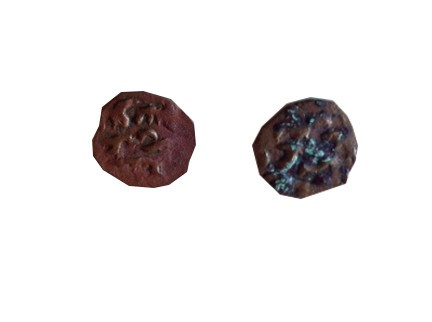
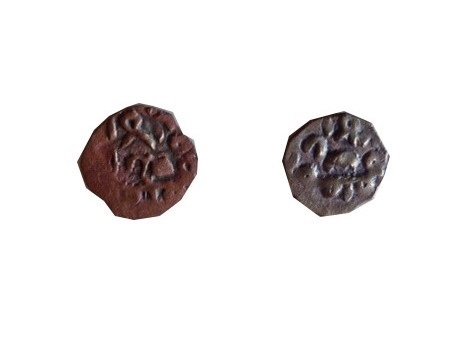
Ali Bin Yusuf coins of Mogadishu.
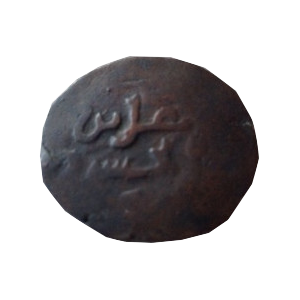
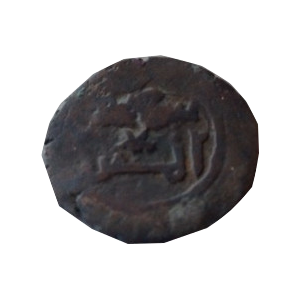
Ali Bin Hassan Coins.
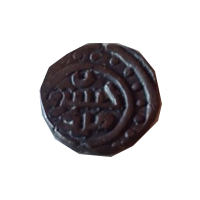
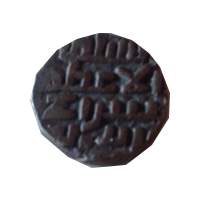
Ghazwanid Sultanate Coins.